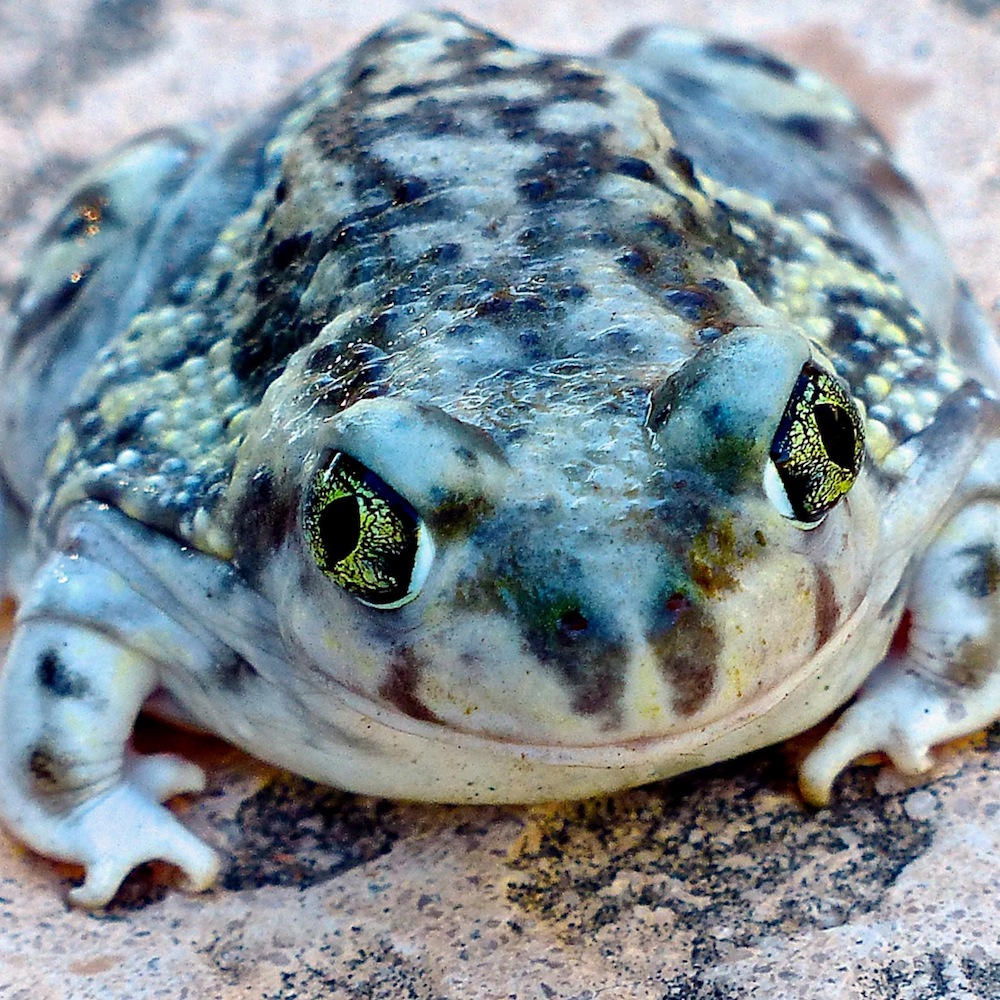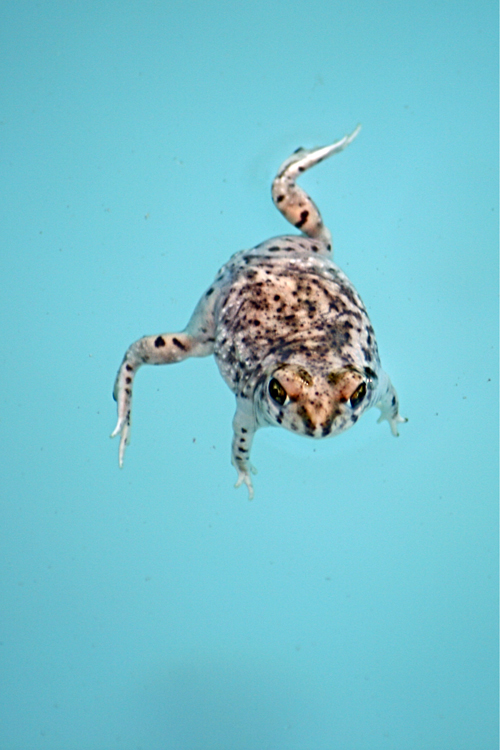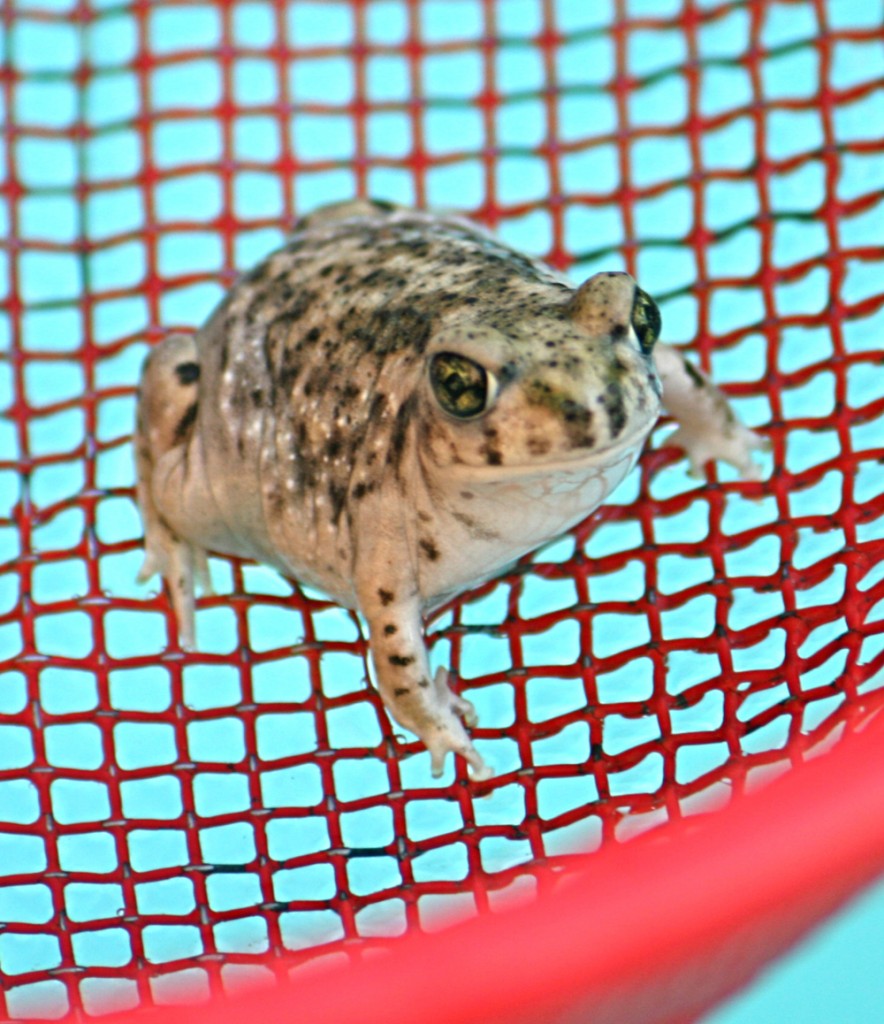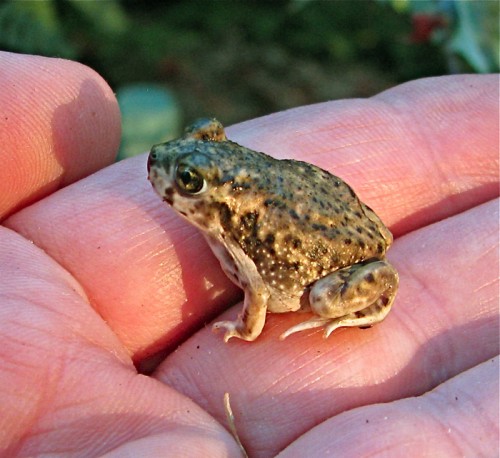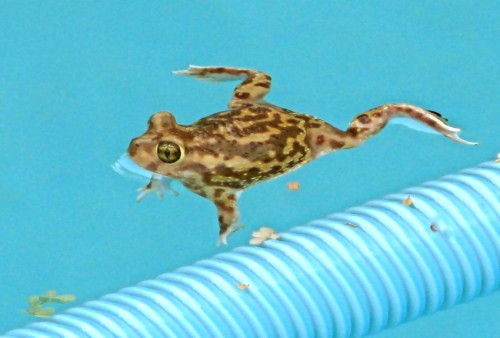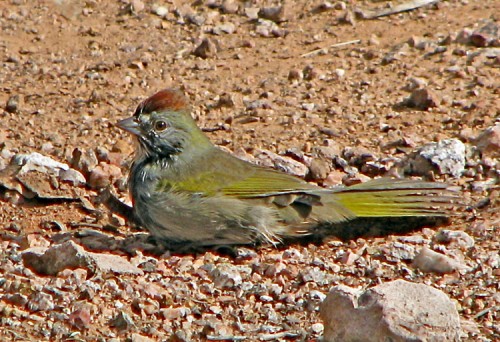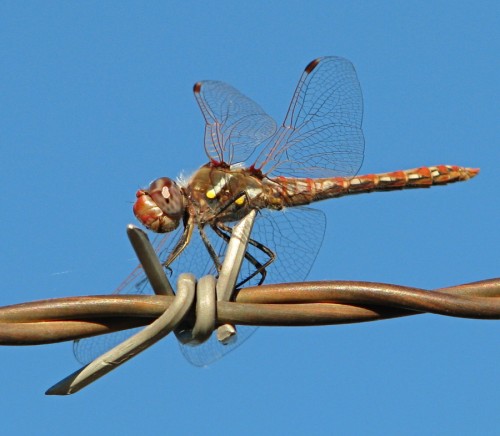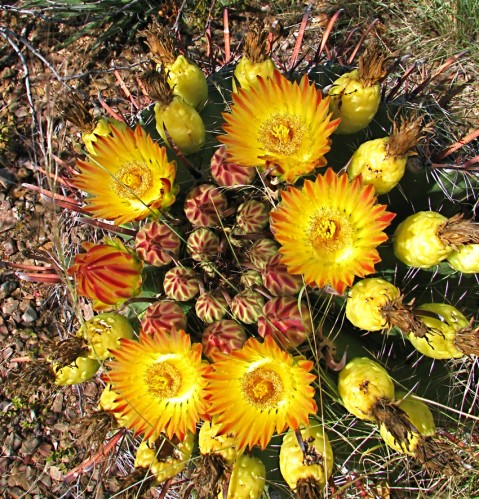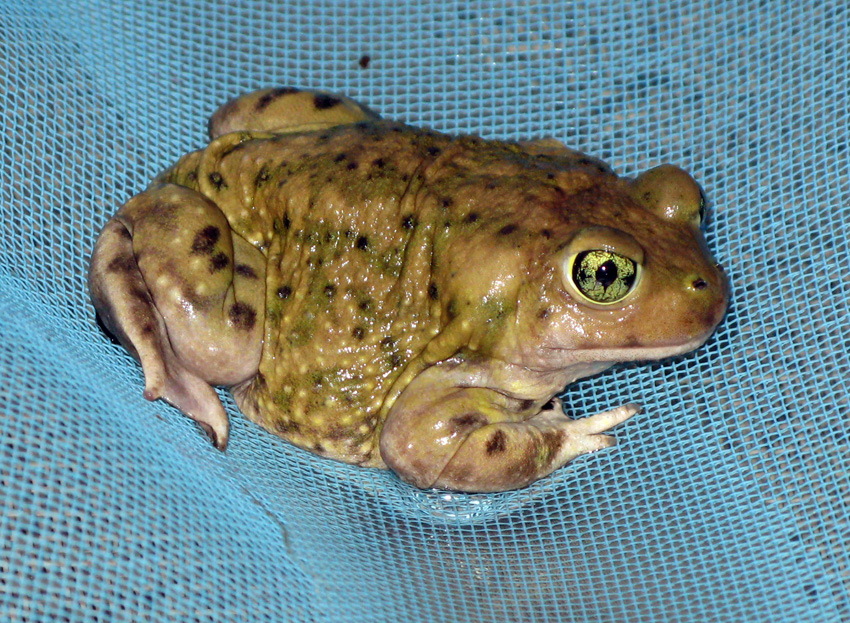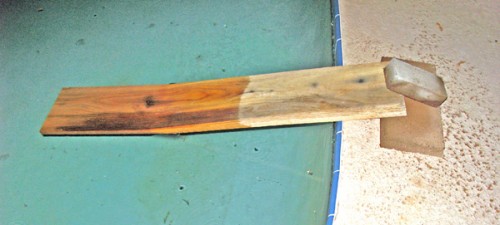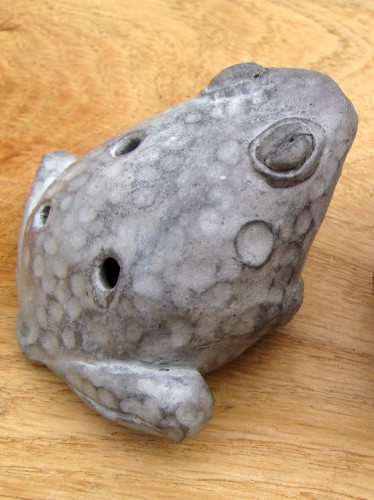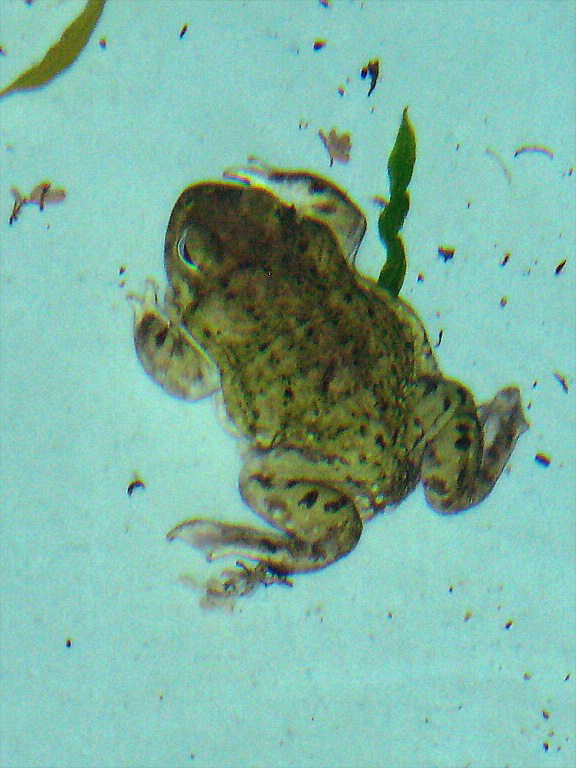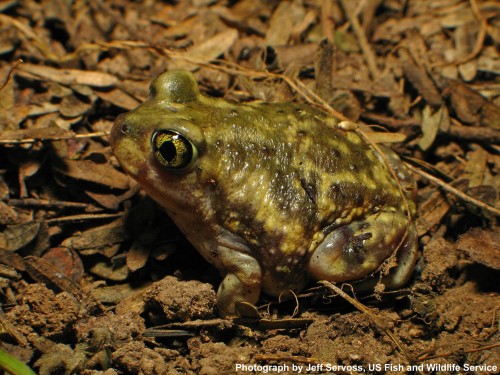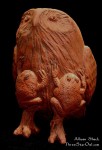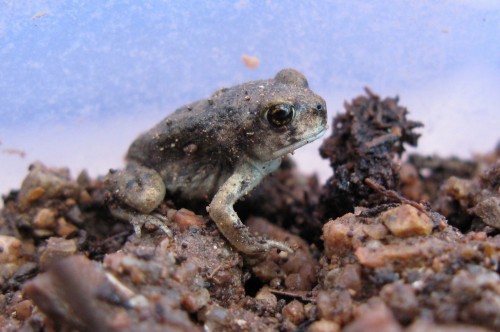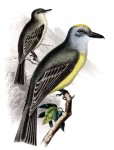This is not a toad and do not lick it
I’ve noticed a pattern. In late September and early October, Spadefoots come out and wander around the yard. Some are small, and look like young of the year. Some are less small, and may be hatched in previous seasons.
Today I noticed an agitation in the pool — my workspace looks over the shallow end — and I went out to check, expecting a lizard. We’ve got a wildlife ramp set up, but not all plunge-victims find it in time, so I always go out to see what’s causing ripples.
It was a fairly well-grown Spadefoot. As I’ve mentioned here in the past, Spadefoots are not technically toads, although you’d never know by looking, or at least I wouldn’t know. Technically, they are “toad-like amphibians”. Or so I’ve read.
Here’s an eye-level shot of today’s TLA (toad-like amphibian)
You’ll just have to imagine me lying on my belly on the gritty pool deck with the end of the macro lens just centimeters off this guy’s nose. I think the proximity of the lens is what accounts for the wacky eye-angle: parallax.
more info
#333300;”>And look at those clutching little fingers — I LOVE toad hands. (Yes they’re not toads, and yes they’re not hands, but you know what I mean). Also, it’s hard to tell where its smile ends — does it wrap all the way around its shoulders like a shawl? Am I in danger of being swallowed? In case you’re wondering, its skin isn’t really blue, but it was in the shade, and the digital process cooled its natural tans and dark olives to the color you see. The eyes, however, really are that shattered-glass golden green. The whole animal is not quite three inches long.
I had to rescue it out of the pool twice, and we’ll have to keep checking the filter basket for a few days. At some point, the Spadefoot will have hunted itself into a state of packing enough stored energy to survive its over-wintering self-interment. Then it’ll dig in somewhere in soft soil to wait for next year’s summer storms, when the thunder will boom it up from the ground to enjoy the moist monsoon nights.

